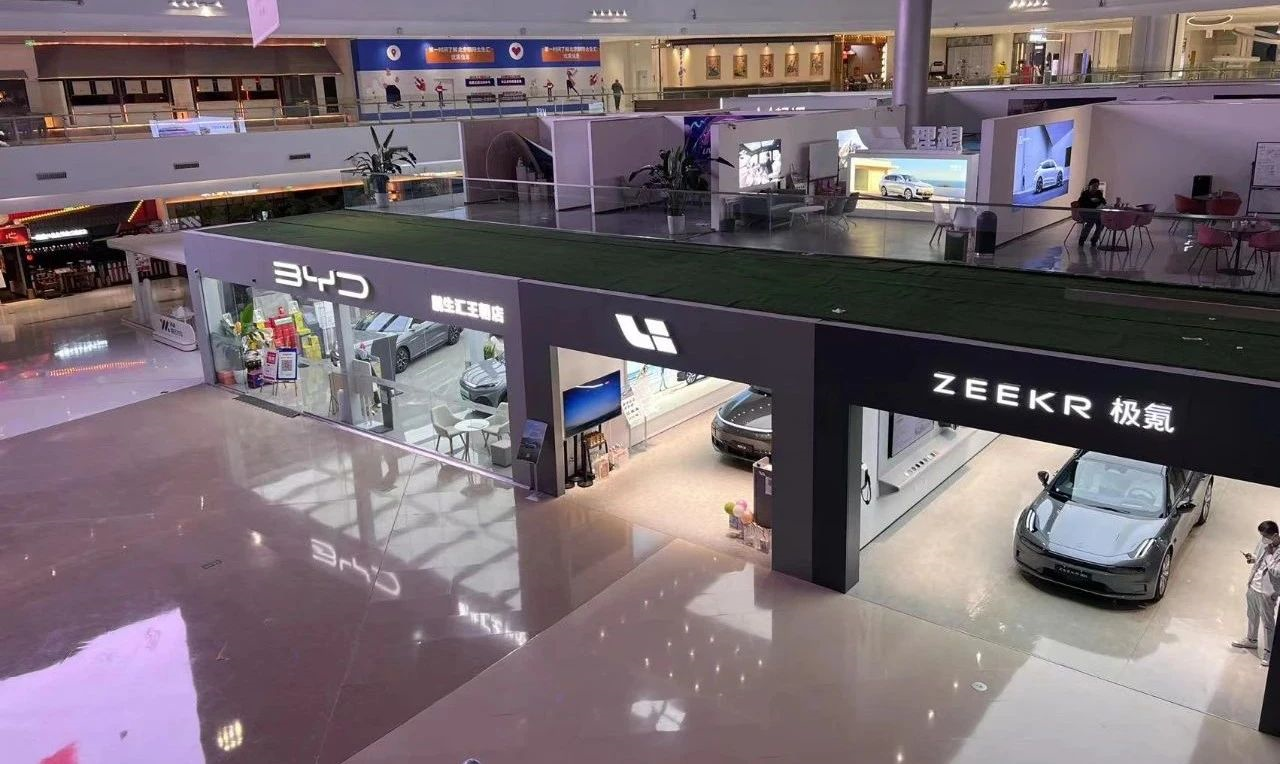Special Contributor | Zhu Yulong
Editor | Qiu Kaijun
In the first week of December, there was no mass rush for subsidies as in previous years.
In the past, the sales volume of new energy vehicles (NEVs) needed to surge at the end of the year: firstly, to receive subsidies before the subsidy policy ends; secondly, to make annual summary data look more attractive. Next year, NEV subsidies are planned to be fully withdrawn, which is expected to trigger a surge in sales in the industry.
In the first week of December, the sales volume of NEVs was 129,000, an increase of 5.0% over the previous month, but there was no significant growth.
The reason may be that although epidemic prevention and control policies have been adjusted, the economic activities in society have not fully recovered yet. In addition, the pandemic has greatly reduced residents’ disposable income over the past three years. However, as people’s confidence is restored and the control policies are completely lifted, the automobile market will gradually improve despite the unfavorable sales data.
Overall Data on Passenger Vehicles
In week 49 of 2022, from November 28th to December 4th, including the last three days of November and the first four days of December, we consider it the first week of December.
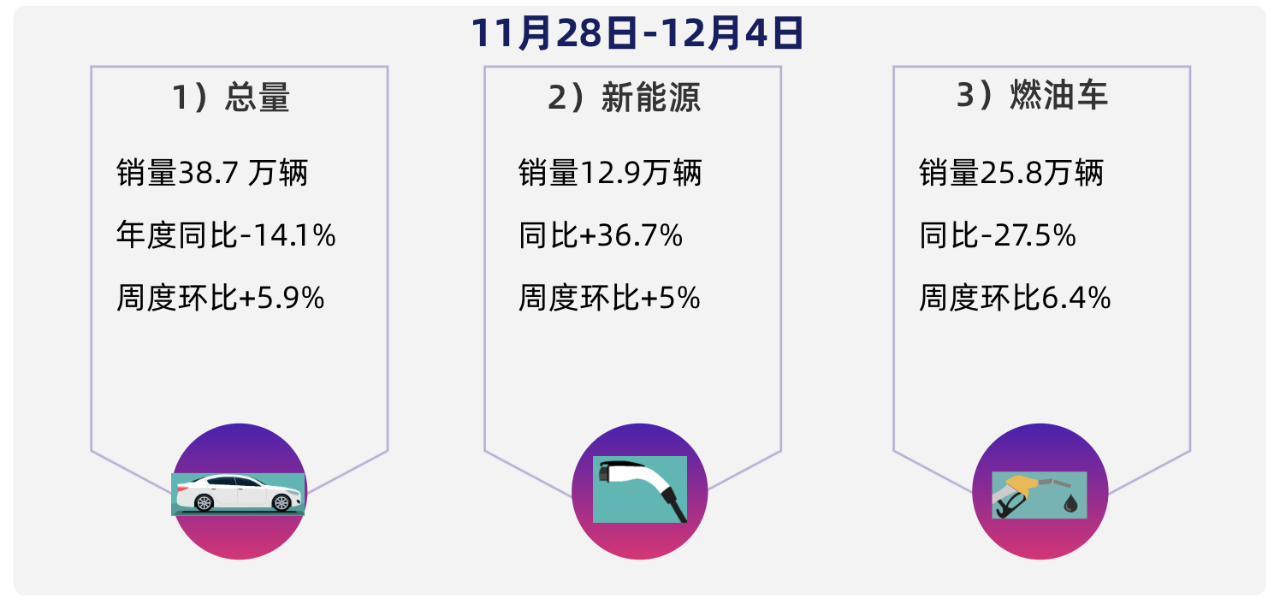
1) The total sales volume of passenger vehicles this week was 387,000, a YoY decrease of 14.1%. We had expected this earlier. If we combine the four weeks in October and the four weeks in November, we can see a slight fluctuation in the overall terminal delivery data. Therefore, the sales data of this week is not surprising.
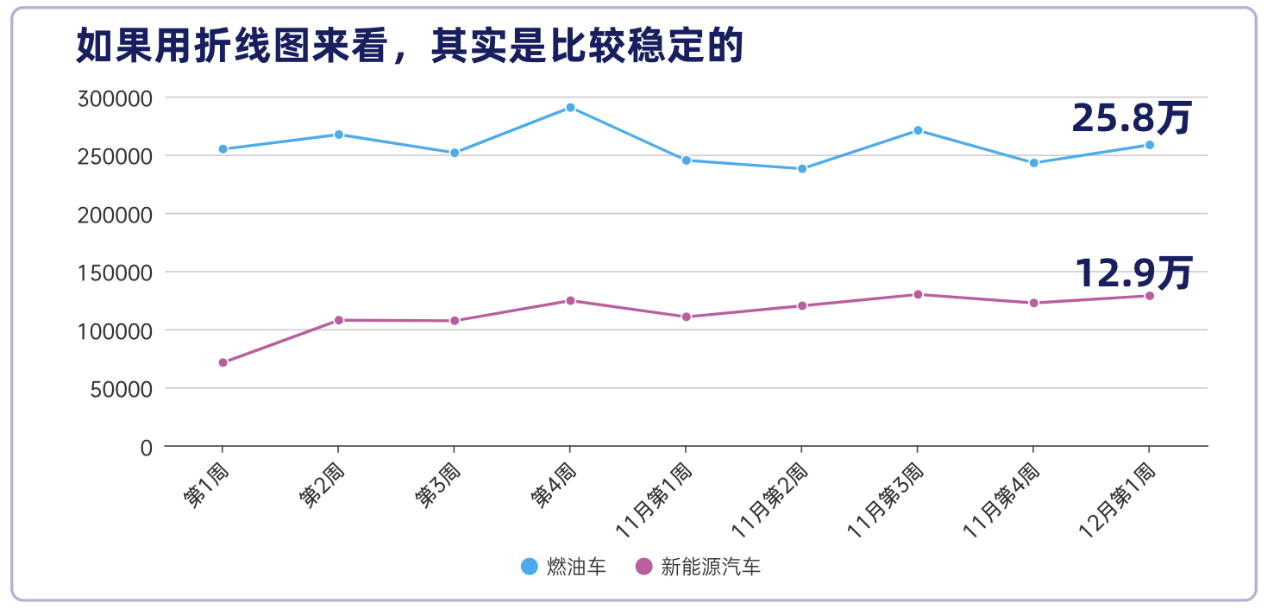
2) The sales volume of NEVs was 129,000, a YoY increase of 36.7% and a MoM increase of 5.0%. Among them, plug-in hybrid electric vehicles (PHEVs) sold 33,000 units, a YoY increase of 85.4%; battery electric vehicles (BEVs) sold 95,600 units, a YoY increase of 25.4%. The growth rate of the latter was more than three times lower than that of the former.
3) The sales volume of gasoline vehicles was 258,000, a YoY decrease of 27%. We have heard that many traditional automakers’ factories have stopped production, which has indeed been greatly affected by the pandemic.## Major Brands of New Energy Vehicles
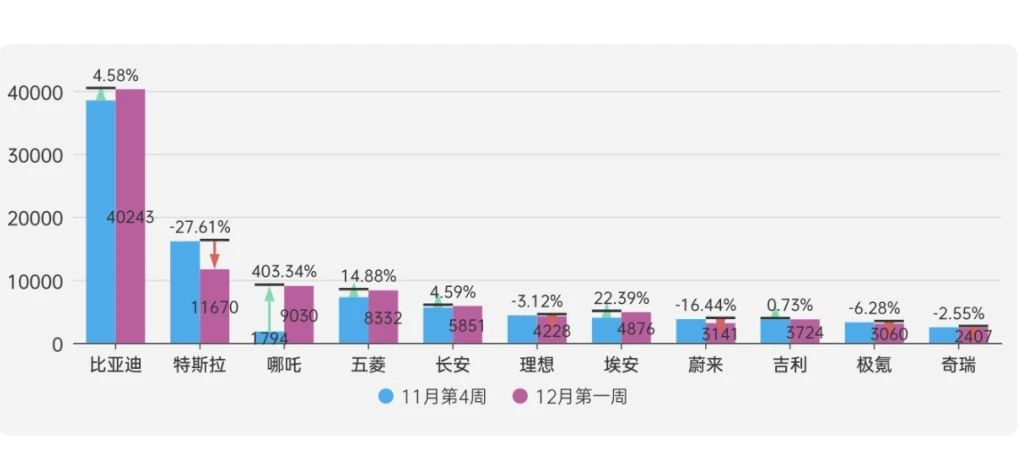
BYD’s data has slightly improved to 40,000 vehicles. Recently, 3,114 PHEVs were delivered to the Shanghai market in a single week.
Tesla delivered 11,670 vehicles in China, but there has not been a significant improvement in delivery. Model Y is currently fluctuating the most. There were reports that Tesla took the initiative to reduce production of Model Y, but they were “refuted.”
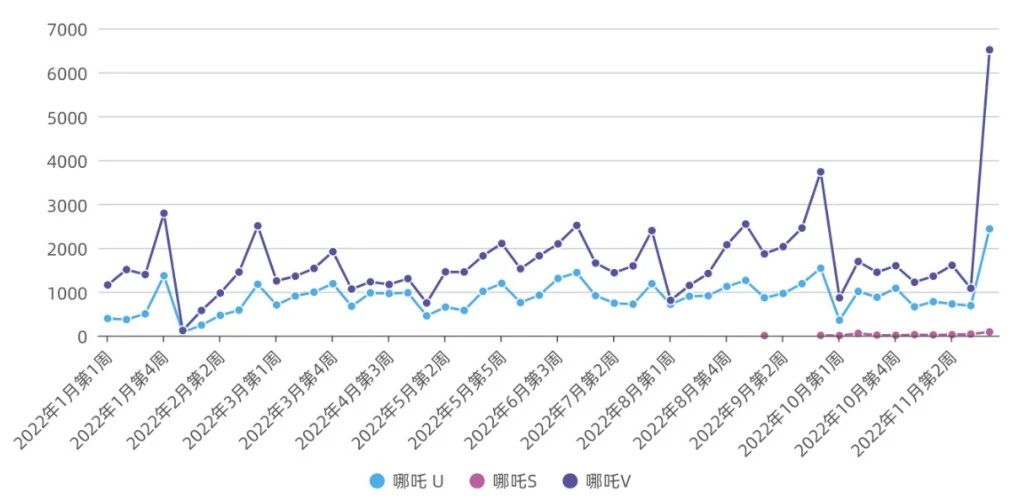
NETA delivered 9,030 vehicles. From my understanding, this large increase may be due to concentrated license plate registration at the company level, mainly from the 6,000+ NETA V vehicles. I pulled out the NETA data for 2022 to give you a more intuitive feeling.
Wuling delivered 8,332 vehicles and maintained stability.
Changan delivered 5,851 vehicles, and the epidemic prevention and control in Chongqing is gradually improving.

Li Auto delivered 4,228 vehicles and has been trying to deliver 300 vehicles per month in Shanghai. The focus in December is in Shanghai. Moreover, the delivery data for L8 models exceeded L9 for the first time.
Enovate delivered 4,876 vehicles and remained relatively stable.
NIO delivered 3,141 vehicles and remained stable. I saw several ET5 vehicles in Jiading today.
Zeekr delivered 3,060 vehicles, and there don’t seem to be any surprises coming at the end of the year.
This article is a translation by ChatGPT of a Chinese report from 42HOW. If you have any questions about it, please email bd@42how.com.
